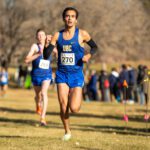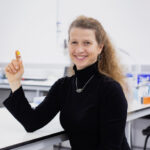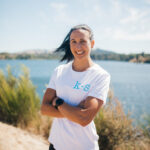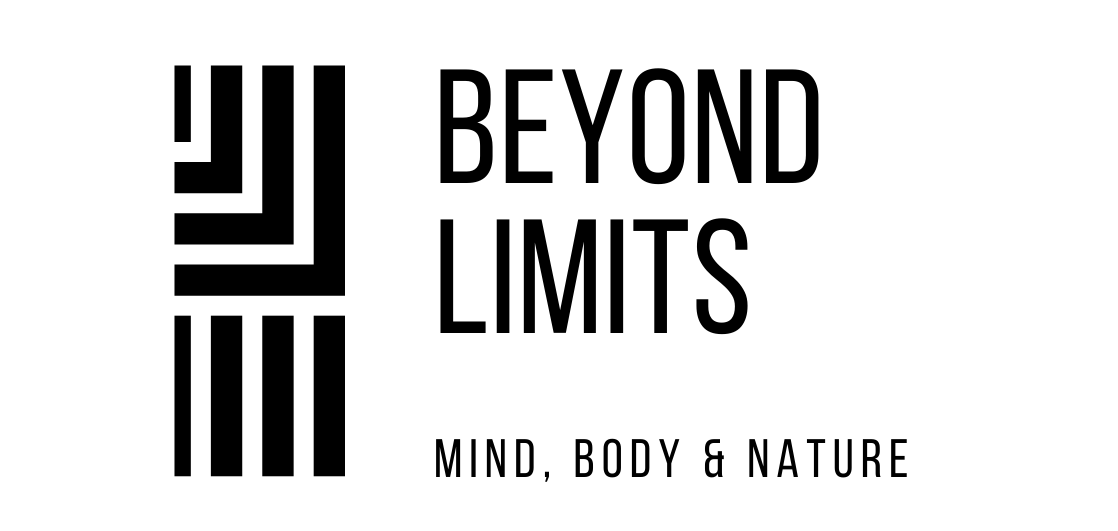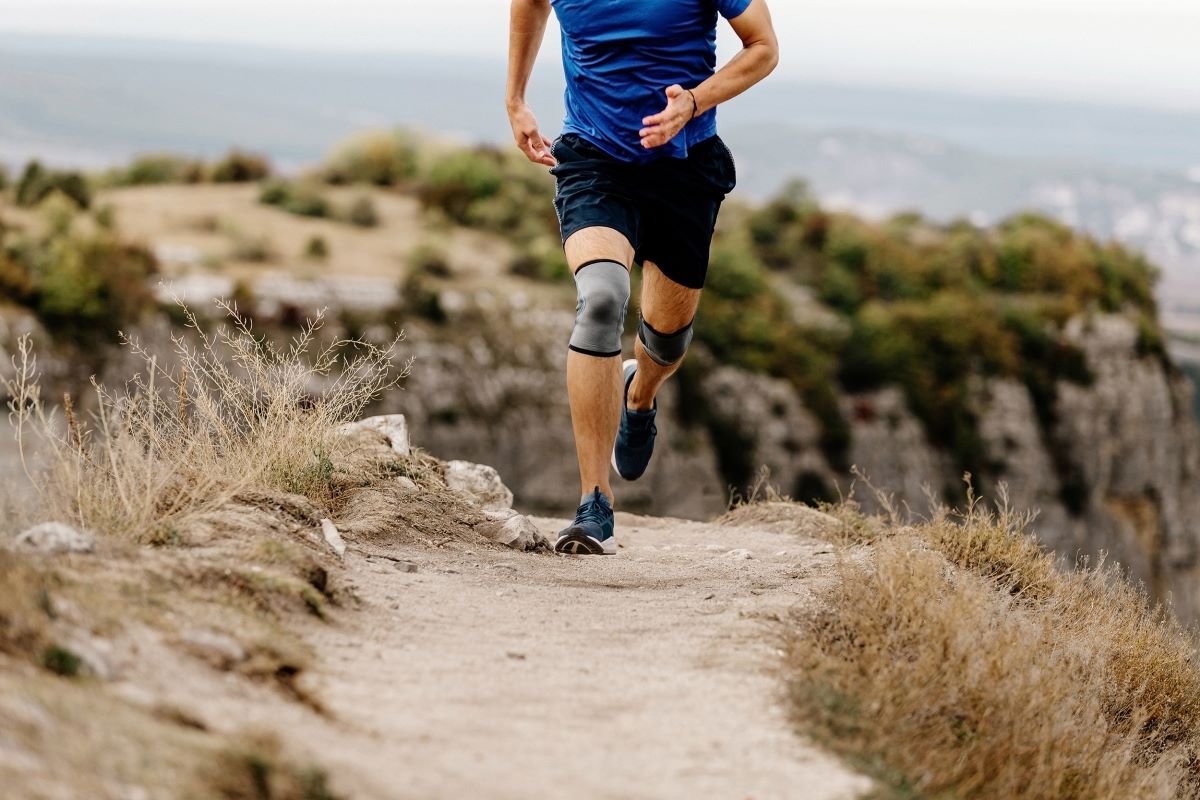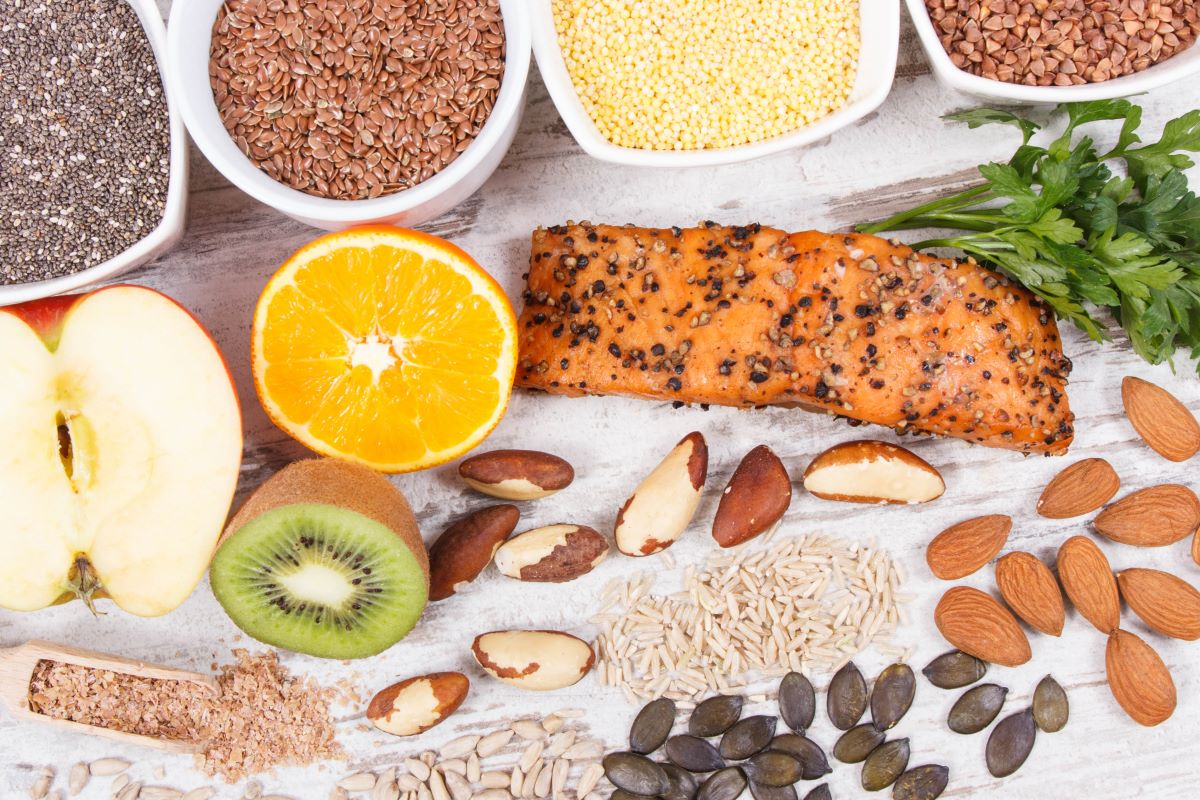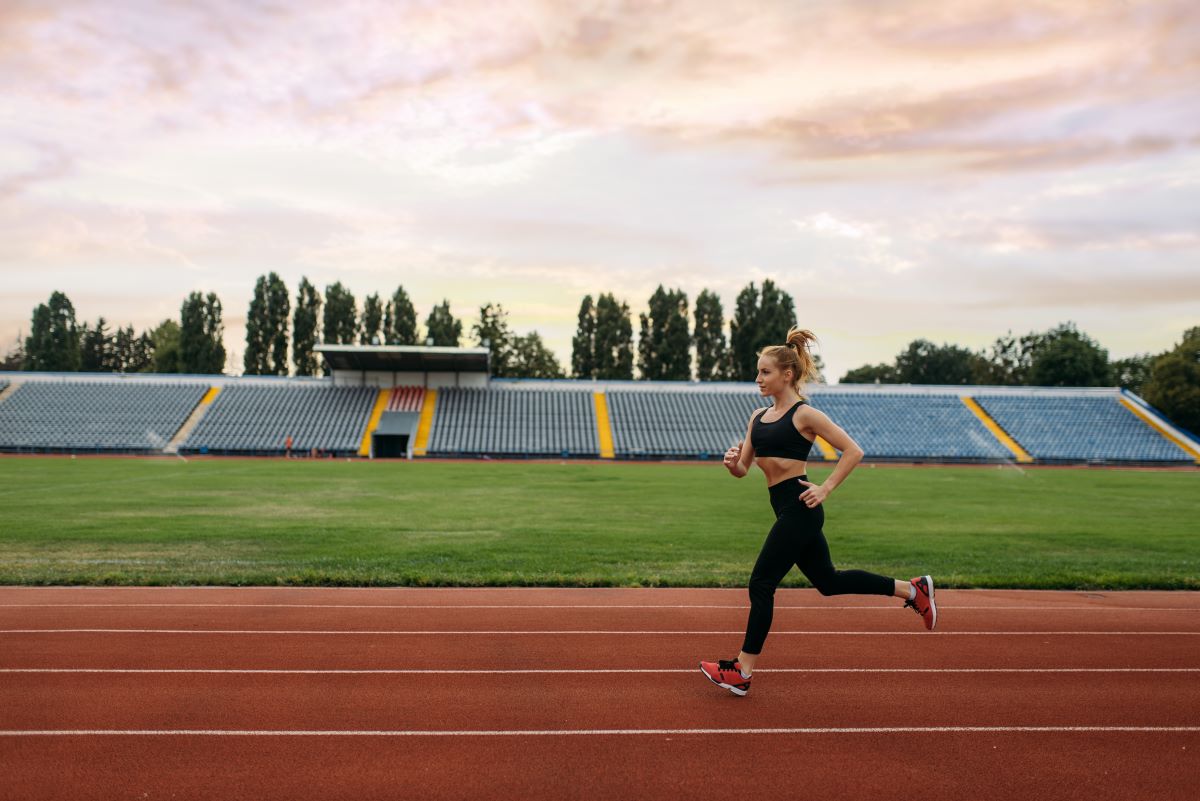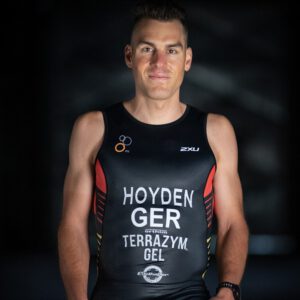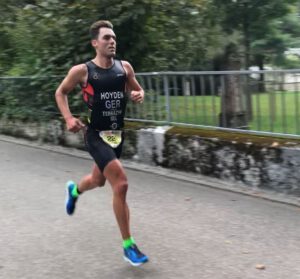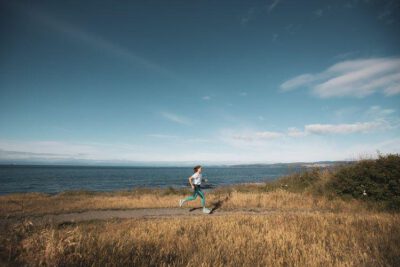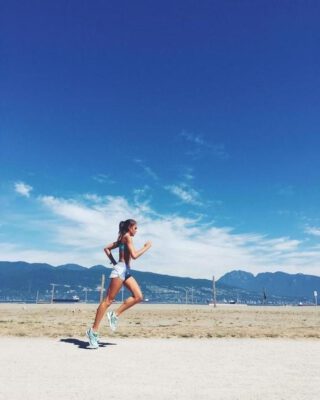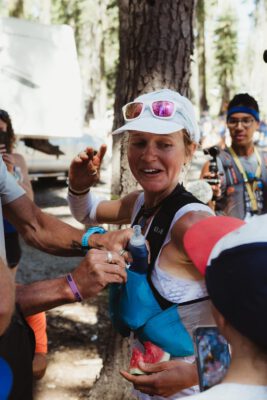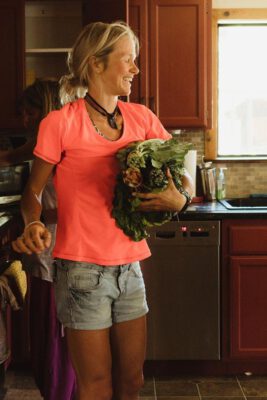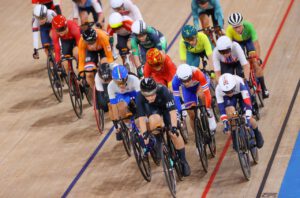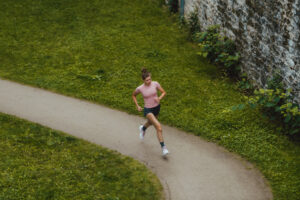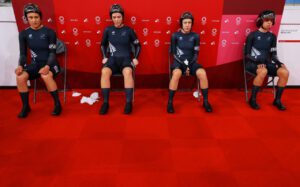After RED-S: Road to Recovery
- Home
- Blog
Click here to read in German/Hier geht es zur deutschen Version
This is the fifth part of the series “RED-S: About the Pressure to Perform and Athletes Who Change the Narrative”
Recovering from RED-S goes beyond the physical symptoms: There is also a mental component.
“It was quite hard mentally because it was the start of the season,” professional cyclist Georgia Williams told me about the year she decided to take her health more serious. At the time, she was living in Girona, a town in Spain that’s known for its international cycling community. “I would just walk to the café and see 20 cyclists.”
Being confronted with what you’re missing out on every day can be hard on one’s mental health. But Georgia kept reminding herself that her health is more important. After all, her team was so generous to give her all this time off, and she just needed to make the most of it – and then come back stronger.
“It was hard, because it was the total opposite of what you’re used to doing,” Georgia said.
But only four months later, she was able to get back into training – while continuing her strategy of fueling right before, during, and after every ride.
“I think my body needed the initial four months of really stepping back and resting and fueling and gaining back some weight,” Georgia said. Just a little later, her menstrual cycle returned during a training camp in Andorra. “My cycle returned after not too long, considering I didn’t have it for five or six years.”
But during her RED-S recovery, she gained back more than her period – there was also some weight gain.
“I was 58 kg to start with and then I got to 65 or 66 kg,” Georgia said. “It’s mentally really hard, too.”
However, to sustainably recover from RED-S, there is no way around weight gain during the recovery process.
“We are very much still at the point where body image or body composition is seen as a performance motor,” said elite sports nutritionist Alicia Edge. “But body composition is not a performance motor. It can absolutely influence performance, but we need to stop measuring it and saying, ‘You need to lose this much weight or get to this body fat percentage.’”
Instead, she suggests thinking about the “why” behind wanting to lose weight. Many athletes are trying to lose weight to improve their performance, but in her work, she often sees the opposite happening.
“They’re aiming for body composition goals at the cost of why they wanted them in the first place, which is performance or confidence,” she said.
But Alicia feels that the narrative of “smaller means faster” is changing. “It’s changing because of the athletes speaking up about it. Athletes now have a voice, and they have a platform for their voice.”
Georgia experienced exactly that. At first, she didn’t speak much about her experience with RED-S, but once she did a few interviews, she started getting a lot of messages on Instagram asking for advice.
“I told them everything I did [in recovery] and what actually helped me,” Georgia said. “And a few months later, they would message me, and they were successful. That was just so rewarding.”
For example, she found that fueling right before, during, and after training was the most important thing – not only in RED-S recovery, but also in the time after. In her early years as a professional cyclist, she would do countless 3-hour rides without having a snack. But her recovery from RED-S taught her to refuel at the right time.
“I never knew about having to eat on a three-hour ride. And I wasn’t too hungry, because my body just got used to it,” Georgia said.
RED-S recovery is all about limiting the stress on your body. That’s why Georgia also dedicated most of her free time to relaxation – with plenty of rest days in between her recovery rides. As long as the exercise doesn’t put your body in “stress mode” it’s okay to integrate it into your RED-S recovery plan.
“I’d still go for one-hour rides or an hour and a half, but just low intensity, and I’d make sure I’d have food on that ride,” Georgia said.
Katie Schofield, who is also a cyclist, had a similar strategy. At the time, in 2014, research about RED-S and possible treatment methods was still in its beginnings, so Katie did a lot of experimenting with herself.
“I had the ability to train how I felt I needed to train, so I made it very specific,” Katie said. She would do three weeks of intensive training and then take one week off. She also adapted her training to her menstrual cycle by ramping up intensity and volume around ovulation.
Josh Kozelj‘s recovery from RED-S focused mainly on his diet, but also on changing his mindset around food. He allowed himself to eat foods that he had previously cut out of his diet, and retaught himself that it’s okay to have a snack between breakfast and lunch.
“It was about adding certain things that I had previously taken away,” Josh said. He also started having a snack right after workouts or a late night snack after dinner.
It took about a year until he started feeling better and returned to a normal sleep schedule towards the end of 2019. His motivation also returned and right before COVID-19 hit, he felt like he was “back into the grind.”
According to Alicia, a great way to recover from disordered eating is a concept called “RAVES”, which functions as a guideline for helping athletes recover from RED-S and undereating.
“RAVES starts with regularity, adequacy, and then it goes to variety, eating socially and then spontaneity,” said Alicia.
Athletes who are recovering from an eating disorder start by bringing regularity into their eating habits. The next step from there would be adequacy, then variety – downwards along the RAVES acronym.
“But when we’re looking at disordered eating starting to happen, it goes from the S upwards,” said Alicia. “So someone might lose a bit of spontaneity with their food, then they might stop eating out socially.”
While RAVES is a great tool, recovery from RED-S looks different for different people. That’s because RED-S isn’t always intentional. For some athletes, it is also situational or accidental, simply because they don’t have enough budget for food or because they don’t know how to fuel themselves properly.
“If the reason are those types of things, then our goal is very much around improving the opportunity to eat and improving the knowledge and skill base of how to shop on a budget or how to add more high energy foods in and around training,” Alicia said.
Athletes on a plant-based diet are also at an increased risk of developing RED-S because plant food generally contains fewer calories.
“So often it’s about eating less clean, because clean eating can definitely lead to accidental entry into low energy availability,” Alicia said.
Post Tags
Nach RED-S: Road to Recovery
Die Behandlung von RED-S umfasst nicht nur die körperlichen Symptome: Es gibt auch eine mentale Komponente.
“Es war mental ziemlich schwer, denn es war der Beginn der Saison”, sagte die Profi-Radsportlerin Georgia Williams über das Jahr, in dem sie beschloss, ihre Gesundheit ernster zu nehmen. Damals lebte sie in Girona, einer Stadt in Spanien, die für ihre internationale Radsportgemeinde bekannt ist. “Ich ging einfach ins Café und sah 20 Radfahrer.”
Jeden Tag mit dem konfrontiert zu werden, was man verpasst, kann sich negativ auf die mentale Gesundheit auswirken. Aber Georgia erinnerte sich immer wieder daran, dass ihre Gesundheit wichtiger ist. Schließlich war ihr Team so großzügig, ihr all diese Zeit freizugeben, und sie musste einfach das Beste daraus machen – und dann gestärkt zurückkommen.
“Es war schwer, denn es war das totale Gegenteil von dem, was man gewohnt ist”, sagte Georgia.
Aber nur vier Monate später konnte sie wieder mit dem Training beginnen – und dabei ihre Strategie beibehalten, sich vor, während und nach jeder Radtour zu verpflegen.
“Ich glaube, mein Körper brauchte die ersten vier Monate, in denen ich mich wirklich zurückziehen, ausruhen, Kraftstoffe zu mir nehmen und wieder etwas Gewicht zulegen konnte”, sagte Georgia. Wenig später kehrte ihr Menstruationszyklus während eines Trainingslagers in Andorra zurück. “Mein Zyklus kehrte nach nicht allzu langer Zeit zurück, wenn man bedenkt, dass ich ihn fünf oder sechs Jahre lang nicht hatte.”
Aber während ihrer RED-S Genesung hat sie nicht nur ihre Periode zurückbekommen, sondern auch etwas an Gewicht zugelegt.
“Am Anfang wog ich 58 kg, dann kam ich auf 65 oder 66 kg”, sagt Georgia. “Es ist auch mental sehr schwer.”
Um sich von RED-S nachhaltig zu erholen, führt jedoch kein Weg an einer Gewichtszunahme während des Erholungsprozesses vorbei.
“Wir befinden uns immer noch an einem Punkt, an dem das Körperbild oder die Körperzusammensetzung als Leistungsmotor angesehen wird”, sagt Alicia Edge, Ernährungswissenschaftlerin im Spitzensport. “Aber die Körperzusammensetzung ist kein Leistungsmotor. Sie kann durchaus die Leistung beeinflussen, aber wir müssen aufhören, sie zu messen und zu sagen: ‘Du musst so viel abnehmen oder diesen Körperfettanteil erreichen.'”
Stattdessen schlägt sie vor, über das “Warum” nachzudenken, das hinter dem Wunsch, Gewicht zu verlieren, steht. Viele Sportler versuchen abzunehmen, um ihre Leistung zu verbessern, aber in ihrer Arbeit sieht sie oft das Gegenteil.
“Sie streben Ziele in Bezug auf die Körperzusammensetzung auf Kosten ihrer eigentlichen Ziele an, nämlich Leistung oder Selbstvertrauen”, sagt sie.
Alicia ist jedoch der Meinung, dass sich die Vorstellung von “dünner ist schneller” ändert. “Es ändert sich, weil die Athleten sich dazu äußern. Die Athleten haben jetzt eine Stimme, und sie haben eine Plattform für ihre Stimme”.
Georgia hat genau das erlebt. Zunächst sprach sie nicht viel über ihre Erfahrungen mit RED-S, aber nachdem sie ein paar Interviews gegeben hatte, erhielt sie viele Nachrichten auf Instagram, in denen sie um Ratschläge gebeten wurde.
“Ich habe ihnen alles erzählt, was ich [in der Genesung] getan habe und was mir tatsächlich geholfen hat”, sagte Georgia. “Und ein paar Monate später schrieben sie mir, dass sie erfolgreich waren. Das war einfach so erfüllend.”
So stellte sie beispielsweise fest, dass die Nahrungsaufnahme vor, während und nach dem Training das Wichtigste ist – nicht nur für die RED-S-Erholung, sondern auch für die Zeit danach. In ihren Anfangsjahren als Radprofi fuhr sie unzählige dreistündige Radtouren, ohne einen Snack zu sich zu nehmen. Aber ihre Erholung von RED-S hat ihr gezeigt, wie wichtig es ist, sich zum richtigen Zeitpunkt zu verpflegen.
“Ich wusste nicht, dass ich während einer dreistündigen Radtour etwas essen muss. Und ich hatte nicht wirklich Hunger, weil sich mein Körper einfach daran gewöhnt hat”, sagte Georgia.
Bei der Erholung von RED-S geht es vor allem darum, die Belastung für den Körper zu begrenzen. Deshalb widmete Georgia auch den Großteil ihrer Freizeit der Entspannung – mit vielen Ruhetagen zwischen den lockern Radfahrten. Solange das Training ihren Körper nicht in den “Stressmodus” versetzt, ist es in Ordnung, sie in den Trainingsplan während der Erholung von RED-S zu integrieren.
“Ich ging immer noch auf ein- oder eineinhalbstündige Touren, aber nur mit geringer Intensität, und ich achtete darauf, dass ich während der Fahrt etwas zu essen hatte”, sagte Georgia.
Katie Schofield, eine ehemalige Profiradfahrerin, verfolgte eine ähnliche Strategie. Damals, im Jahr 2014, steckte die Forschung über RED-S und mögliche Behandlungsmethoden noch in den Anfängen, also experimentierte Katie viel mit sich selbst.
“Ich hatte die Möglichkeit, so zu trainieren, wie ich es für nötig hielt, also habe ich es sehr spezifisch gemacht”, sagte Katie. Sie absolvierte drei Wochen lang intensiveres Training und machte dann eine Woche Pause. Außerdem passte sie ihr Training an ihren Menstruationszyklus an, indem sie die Intensität und den Umfang um den Eisprung herum steigerte.
Josh Kozeljs Genesung von RED-S konzentrierte sich hauptsächlich auf seine Ernährung, aber auch darauf, seine Einstellung zum Essen zu ändern. Er erlaubte sich, Lebensmittel zu essen, die er zuvor aus seinem Speiseplan gestrichen hatte, und brachte sich selbst bei, dass es in Ordnung ist, zwischen Frühstück und Mittagessen einen Snack zu essen.
“Es ging darum, bestimmte Dinge hinzuzufügen, die ich vorher weggelassen hatte”, sagte Josh. Er begann auch, direkt nach dem Training einen Snack zu sich zu nehmen oder am späten Abend einen Snack nach dem Abendessen.
Es dauerte etwa ein Jahr, bis es ihm besser ging und er gegen Ende 2019 zu einem normalen Schlafrhythmus zurückkehrte. Auch seine Motivation kehrte zurück, und kurz vor COVID-19 hatte er das Gefühl, “wieder voll dabei zu sein.”
Laut Alicia ist ein Konzept namens “RAVES” ein guter Weg, um sich von Essstörungen zu erholen, denn es dient als Leitfaden, um Athleten zu helfen, sich von RED-S und Unterernährung zu erholen.
“RAVES beginnt mit Regelmäßigkeit, Sättigung und geht dann über zu Abwechslung, sozialem Essen und Spontaneität”, so Alicia.
Sportler, die sich von einer Essstörung erholen, beginnen damit, ihre Essgewohnheiten auf Regelmäßigkeit umzustellen. Der nächste Schritt wäre dann die Sättigung, dann die Abwechslung – abwärts entlang des RAVES-Akronyms (auf Englisch).
“Aber wenn wir sehen, dass eine Essstörung beginnt, dann geht es vom S nach oben”, sagt Alicia. “Jemand verliert also vielleicht ein wenig die Spontaneität beim Essen und hört dann vielleicht auf, in der Gesellschaft zu essen.
RAVES ist zwar ein großartiges Instrument, aber die Genesung von RED-S sieht bei jedem Menschen anders aus. Das liegt daran, dass RED-S nicht immer beabsichtigt ist. Bei manchen Sportlern ist es auch situationsbedingt oder zufällig, einfach weil sie nicht genug Geld für Lebensmittel haben oder nicht wissen, wie sie sich richtig ernähren sollen.
“Wenn der Grund dafür solche Dinge sind, dann besteht unser Ziel darin, die Möglichkeit zu verbessern, sich zu ernähren und das Wissen und die Fähigkeiten zu verbessern, wie man mit einem geringen Budget einkaufen kann oder wie man mehr energiereiche Lebensmittel in und um das Training herum zu sich nehmen kann”, sagte Alicia.
Sportler, die sich pflanzlich ernähren, haben auch ein erhöhtes Risiko, an RED-S zu erkranken, da pflanzliche Lebensmittel im Allgemeinen weniger Kalorien enthalten.
Es geht also oft darum, weniger “clean” zu essen, denn “clean” zu essen kann definitiv dazu führen, dass man versehentlich in eine niedrige Energieverfügbarkeit gerät”, sagte Alicia.
About The Author
I did my first triathlon on a pink kid’s bike with training wheels at 6 years old. That’s where my love for the sport was sparked, but it would take another decade until I figured out that I wanted to combine my passions for sports and writing.
Meet Alicia
Alicia Edge is the cofounder of Compeat Nutrition. She works as a sports nutritionist, where she talks to a lot of athletes who developed RED-S. She also shares her knowledge in her podcast “The Compeat Waffle.”
Meet Josh
Josh Kozelj is a Canadian journalist and runner. During his undergraduate studies, he competed in cross-country and track and field for the University of Victoria in Canada, where he developed RED-S in his second year. He is now pursuing a master’s degree in journalism.
Meet Georgia
Georgia Williams is a professional road cyclist from New Zealand. Her biggest achievement in cycling is a silver medal at the Commonwealth Games in 2018. After that, she decided to dedicate a few months to her recovery from RED-S. Now, she is hoping to compete at the women’s Tour de France this summer.
Meet Nicky
Dr Nicky Keay is a sport and dance endocrinologist and her passion for the matter shows not only in the row of degrees she holds, but also in the number of publications on RED-S, bone health, and related conditions. She conducts research on sports and dance endocrinology as a clinical lecturer at University College London and Durham University.
Meet Katie
Katie Schofield is a former professional track cyclist from New Zealand. She was diagnosed with RED-S in 2014, which inspired her to pursue a PhD in mixed methods approaches, which helps her to research Low Energy Availability and Relative Energy Deficiency in Sport.
What is Relative Energy Deficiency in Sport (RED-S)?
RED-S the manifestation of symptoms as a result of LEA. The 2014 statement on RED-S published by the International Olympic Committee defines RED-S as a syndrome that comes with changes to the “physiological function including, but not limited to, metabolic rate, menstrual function, bone health, immunity, protein synthesis, cardiovascular health.” To say it in simple words, RED-S can have far-reaching health consequences such as osteoporosis, chronic fatigue syndrome or stress fractures. In some cases, RED-S can also have a psychological factor.
What is Low Energy Availability (LEA)?
Low energy availability (LEA) is the scientific term for undereating in athletes. When the calorie intake drops below the required amount of energy that’s needed for daily life and training load, the body saves energy by shutting down body functions.
Disclaimer
All resources and information shared on this website are only for informational purposes and aren’t intended to diagnose, treat, or cure any condition or disease.






